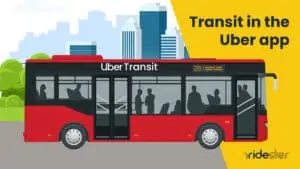Key Takeaways
- Class A CDL: For heavy vehicles over 26,000 pounds, allowing operation of trucks and trailers.
- Class B CDL: Permits driving single vehicles over 26,000 pounds and towing trailers up to 10,000 pounds.
- Class C CDL: For transporting 16+ passengers or hazardous materials requiring a placard.
- Class D License: Standard non-commercial license for personal vehicle operation and light trucks.
Are you interested in landing a driving job where you can transport passengers or operate heavy big rigs? Before you can do that, you’ll need to get your hands on one of the following: Class A, B, C, or D driver’s license.
So, what does each of these letters mean? What are their requirements? And how can you get one?
This in-depth breakdown of CDLs will tell you everything you need to know about these licenses and how you can acquire one.
What are the Drivers’ License Classes?
If you’re thinking of operating a heavy rig like a bus or tractor-trailer, you can’t use your personal driver’s license. You need to file for the appropriate commercial driver’s license (CDL) for the vehicle you’ll be driving, either A, B, C, or D.
To obtain a CDL, you need to be at least 18 or 21, depending on the state where you’re getting your license.
Next, you’ll begin by enrolling in driver’s ed and taking training courses with materials specific to the state where you’re applying.
You’ll also receive on-the-road supervised driving instructions, which will be followed by a driving and a written test.
Once you pass both exams, you’ll be required to pay the necessary license fees. After that, you’ll be on your way to becoming a better driver.
Keep in mind that each state issues its own CDLs. You may also notice slight variations in the rules and regulations that govern the operation of commercial vehicles from one state to the next.
Here are the steps you need to apply for a commercial driver’s license:
- Understand the CDL requirements for your state, which may include physical or age restrictions.
- Next, apply for and receive a CDL instruction permit from the DMV in your state by passing a written exam and a road skills performance test.
- Apply for CDL endorsements, which are special permits required for transporting hazardous materials, and may require a background check and are denoted by a single letter on your license.
- Finally, take a CDL driving test at an approved DMV location in your state or a 3rd party testing facility.
- When it’s time to renew your commercial driver’s license, you may be required to take an eye exam and a few additional physical assessments.
4 Types of Commercial Driver’s Licenses
The first kind of license that comes to mind is a regular driver’s license, which lets you drive standard two- or four-door passenger cars. Yet, it’s not the only kind of license out there.
Below are the four most common types of CDLs available for drivers operating large trucks, transporting passengers, and driving HazMat vehicles. It’s actually against the law to be driving these big rigs without a license.
Class A License
In most states, Class A commercial licenses are required for operating commercial motor vehicles (CMVs) with two or more axles, such as a tractor-trailer, a livestock carrier, or a semi-truck. These vehicles typically have a Gross Vehicle Weight Rating (GVWR) of over 26,000 pounds with a towed vehicle rate exceeding 10,000 pounds
They’re also required by engineering equipment operators, delivery drivers, bus drivers, and highway maintenance technicians.
Before training for a Class A license, drivers must have a Commercial Driver’s Instruction Permit.
Yet, the requirements differ from state to state. In California, for example, a CDL is only issued if it’s required by the applicant’s employment for any job requiring driving even if they’re not planning on operating a big-rig commercial vehicle.
The factor that makes Class A licenses more inclusive is that they allow drivers to operate a majority of Class B, C, and D vehicles
Class B License
Class B licenses allow drivers to operate single, unhitched vehicles with a GVWR of more than 26,000 pounds. With this license, drivers can also operate vehicles towing a trailer with a GVWR of 10,000 pounds or less.
This type of commercial driver’s license can’t operate Class A vehicles, but it can operate some Class C vehicles as well as the following:
- Small trailers
- Large buses
- Dump trucks
- Box trucks
- Straight trucks
Class C License
Class C commercial driving licenses are for drivers who operate vehicles, such as passenger vans, minivans, stretch limousines, trucks, and buses. These vehicles must be capable of transporting between 16 to 23 passengers, including the driver.
They can also operate a variety of vehicles not covered by Class A or B licenses.
In addition, drivers with a Class C license can operate large HazMat vehicles for transporting hazardous materials rated dangerous or unstable by law and are required to be placarded under the Hazardous Materials Transportation Act.
It’s worth noting that HazMat drivers must be fingerprinted, and they also must pass a Transportation Security Administration (TSA) assessment and a knowledge test.
Class D License
Class D licenses allow divers to operate heavy-duty trucks towing trailers with a GVWR of more than 10,000 pounds. Yet, this is only under the condition that the combined weight of both the truck and trailer doesn’t exceed 26,000 pounds of Gross Combination Weight Rating (GCWR).
Active military personnel also require a Class D license if they’re planning on operating a camper or large vehicle for military purposes.
Yet, Class D commercial licenses don’t have to be only work-related. You can get a Class D license if you’re going to be driving a vehicle that’s towing a recreational vehicle or travel trailer, which you use for personal use as long as it’s under 10,000 pounds.
You may be surprised to know that a Class D driver’s license can be used as your state ID card. But the opposite isn’t true because your state ID card only works as proof of identification and doesn’t grant you any driving privileges.
Special Endorsements and Additional Certifications
Here’s some additional info regarding the four most common types of commercial driver’s licenses.
Special Endorsements
Commercial driving licenses often feature a wide range of endorsements that authorize CDL drivers to operate more specialized types of vehicles. Each endorsement is indicated on the license by a single letter depending on the type of qualification.
The most common endorsements include:
- H : Allows drivers to transport hazardous materials. This type of endorsement requires passing a written exam.
- N : Allows drivers to operate vehicles with a tank filled with gases or liquids. This endorsement also requires drivers to pass a written test.
- P : Allows drivers to operate passenger vehicles with 15 or more passengers. Obtaining a P endorsement requires passing both a written exam and a road test.
- S : Allows drivers to operate a school bus. Acquiring an S endorsement requires obtaining a P endorsement, followed by taking a written and a road test, passing a background check, as well as paying additional fees.
- T : Allows drivers to operate vehicles capable of towing double or triple trailers. This endorsement requires passing a written test.
- X : This type of endorsement is a combination of both H and N endorsements and allows drivers to operate tank vehicles that carry hazardous materials. It requires passing a written test.
Additional Certifications
1. TLC
If you’re thinking about becoming a ride-share driver, you’ll need to apply for a Taxi and Limousine Commission (TLC) license, which allows drivers to transport passengers in taxis or cars employed with rideshare services like Uber or Lyft.
A TLC license is a requirement only in New York City and can be obtained by applying online via the New York City Taxi and Limousine Commission website.
Related: How to obtain a TLC license
2. Junior License (DJ)
A Junior License is similar to a Class D and is reserved for new or younger drivers who have only recently passed their driver’s test.
This type of license comes with more regulations aimed at providing extra safety precautions for the driver, including tighter weight restrictions, driving curfews for driving at certain times of the day, and the use of handheld devices.
3. Class E
This type of non-commercial license is required by taxi drivers 18 years old and over looking to operate single-unit vehicles with a GVWR of more than 26,000 pounds.
These include passenger cars, large vans, and trucks capable of transporting up to 14 passengers.
In most states, rideshare and limo drivers are exempt from this license and only need a standard operator’s license to carry out this service.
- Class M1 : This license authorizes drivers to operate a 2-wheel motorcycle, motorized scooter, or motor-driven cycle.
- Class M2 : This license allows drivers to operate any type of bicycle with an attached motor, such as a motorized bicycle or moped, as well as a motorized scooter.
Frequently Asked Questions
What Is the Difference Between Commercial and Non-Commercial Driver’s Licenses?
There are a couple of differences between the two. The first is that CDLs are issued for operating commercial vehicles for work, whereas non-CDL drivers can operate private vehicles that don’t exceed 8,000 pounds.
Another difference is that CDLs must be issued from your respective state, while non-CDL drivers aren’t restricted to one state.
What Is the Most Common Driver’s License Class?
The most common of all types of licenses is the Class D. It’s the typical license you need to have if you typically operate recreational vehicles on the road, like campers or travel trailers.
Also, active-duty military personnel need it for operating vehicles while on the job.
Conclusion
There are several types of driver’s licenses, including the various classes of commercial driver’s licenses, which vary according to weight class and type of heavy vehicle. There are also a handful of non-commercial, specialized licenses.
If you’re considering getting any of these driving jobs, make sure you pursue the correct type of license for the job. This could be either a Class A, B, C, or D driver’s license, depending on which kind of vehicle you wish to operate.
So, it’s important that you research which category of commercial license you need to carry out the job that interests you. After that, all you need to do is find the nearest driving school near you and get your CDL as soon as possible.





